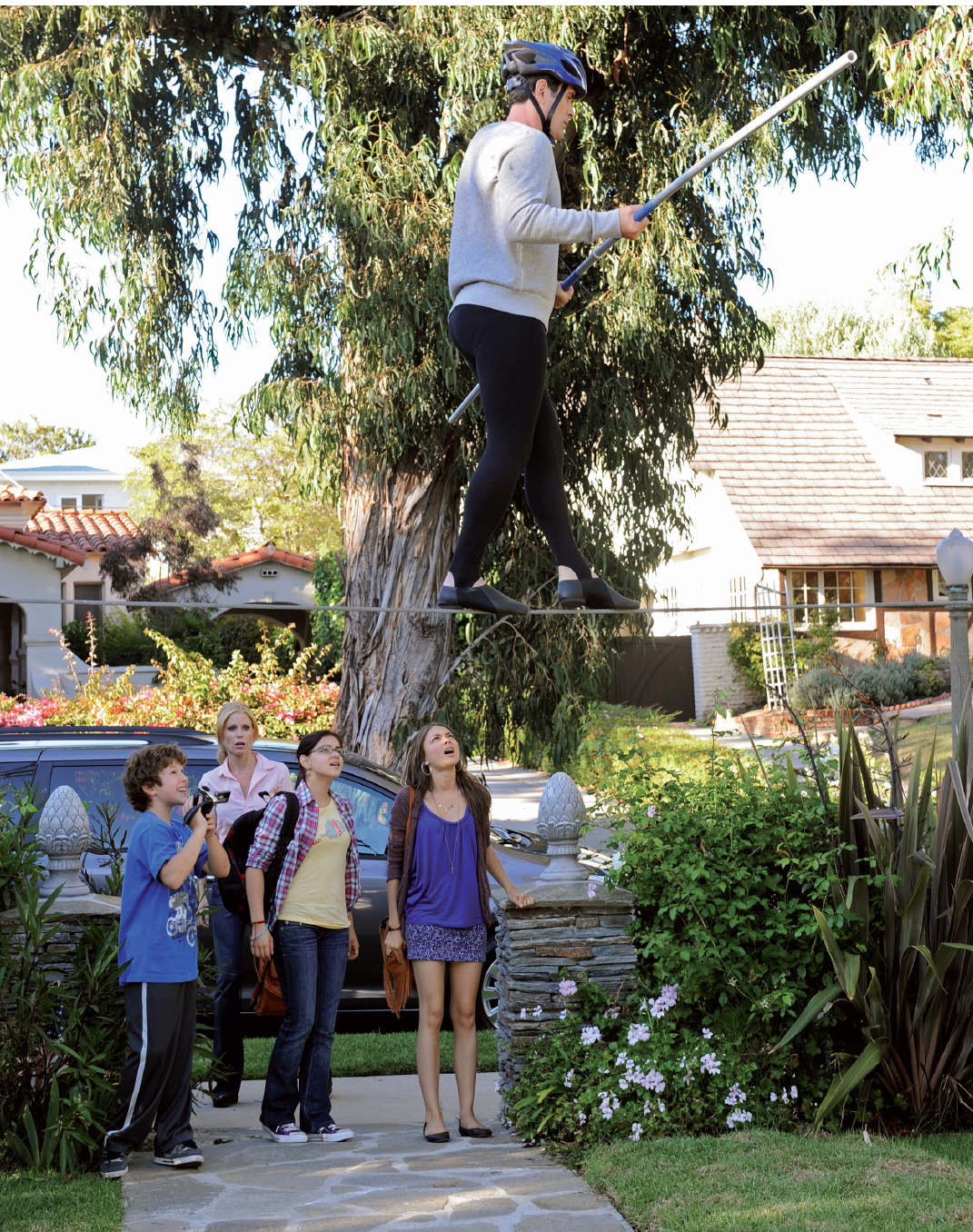8
Television, Cable, and Specialization in Visual Culture
Printed Page 224

Whether we watch traditional broadcast TV, cable, or even direct broadcast satellite TV, we use this visual/audio medium for multiple purposes—like viewing a presidential press conference, catching up on the latest sports scandal, or watching a cooking demonstration given by a first-rate chef. That’s been true for Americans ever since TV sets first became popular in U.S. homes in the 1950s. Yet like radio and magazines, television has changed dramatically over time, reinventing itself to stay relevant in the face of competition from the Internet and video games—which deliver entertainment and information in a more immediate and interactive way.
Consider ABC’s award-winning sitcom Modern Family. Adopting a documentary style similar to that used in The Office, Modern Family blends traditional sitcom stories with film-style comedy and even hints of reality programming. As a mockumentary, it lacks the familiar "laugh track" that accompanies many TV situation comedies (sitcoms), and the characters sometimes even look uncomfortably into the camera. Yet the plot lines and dialogue are tightly scripted. Modern Family has won a wide following that includes many families as well as young, affluent professionals—the key demographic group sought by advertisers.
Though most Americans now get their stories and news from many sources in addition to television, such as radio, the Internet, cell phones, iPods, and video game consoles, the popularity of Modern Family illustrates that this once-dominant medium still plays a central role in U.S. society. Viewership may be half of what it was in the 1970s and 1980s, but programs like Modern Family, NCIS, or American Idol can still command a greater audience than many popular movies, books, or albums. At the same time, even with thirteen or fourteen million viewers each week, the way that some audiences watch shows like Modern Family has changed dramatically.
FOR A LONG TIME AFTER ITS INCEPTION, TV brought millions of American viewers together to share major turning points in U.S. history. For example, people gathered around their sets to watch coverage of Civil Rights struggles, the moon landing, the Watergate scandal, the explosion of a space shuttle, a war in the Middle East, the 9/11 attacks, Hurricane Katrina, and President Obama’s inauguration. TV also united people around more enjoyable activities. Throughout the country, Americans watched the latest episode of their favorite TV comedy or drama at home, then discussed it with friends and colleagues the next day.
With the invention of cable and then satellite TV, we now have more channels and programming options than ever to choose from, each of them appealing, like magazines, to narrow niches of viewers. New platforms keep attracting more users as the ways we experience television continue to change. In 1977, only 14 percent of all American homes received cable services (which at that time carried just twelve channels). In 1999, that number had grown to 70 percent (with many times more channels). However, by 2011 it dipped below 50 percent because of competition from the Internet and direct broadcast satellite (DBS) services like DirecTV. Even traditional cable television customers no longer rely on the same services, with digital cable, DVR, and video-on-demand giving us more options for what we watch and how we watch it.
These technologies and business models, then, have changed the way we watch TV and modified the role it plays in our lives. It’s become easier to watch only what we want—when and where we want. But it’s also harder to capture that sense of community that comes from watching a program together in our living rooms and talking about it with others afterward.
In this chapter, we examine television’s impact on American life—yesterday, today, and tomorrow—by:
- considering TV’s early history, including its foundational technological innovations, the development of program content, and the arrival of cable
- tracing turning points in the evolution of network programming, such as the development of daily news broadcasts, the arrival of new entertainment forms (comedy, drama, reality TV), and the creation of public television
- exploring the evolution of cable and satellite programming, including the emergence of basic and premium services
- assessing the regulatory challenges TV and cable have faced, such as the government’s attempts to decrease networks’ control over content and limit cable’s growth
- examining TV and cable in the Digital Age, including the impact of home video, the Internet, direct broadcast satellite, and now cell phones, mobile video, and WiMax
- analyzing the economics of television by considering how industry players make money and what they spend it on to stay in business
- raising questions about TV’s role in our democratic society, such as whether it is uniting us or fragmenting us and whether it’s giving a greater or fewer number of people a voice